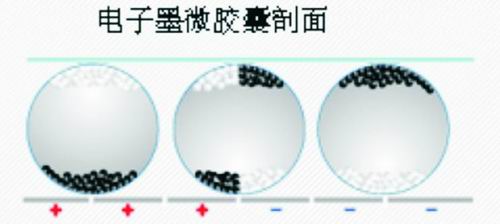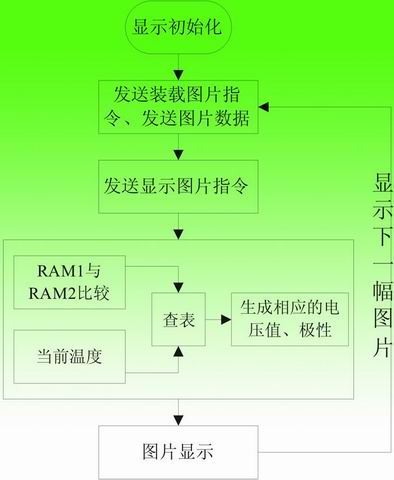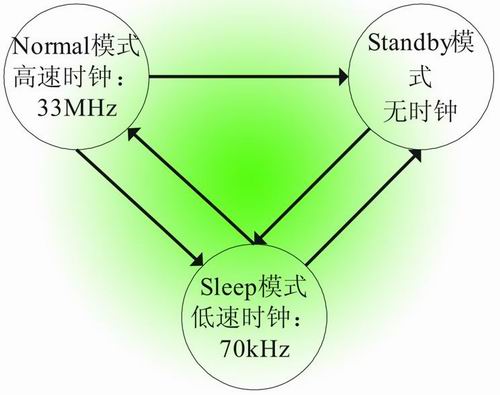Abstract: This paper analyzes the principle of electronic paper display and the advantages of electronic paper display, and proposes a new electronic paper display system solution. The electronic paper display system based on XScale architecture processor PXA270 is a high-performance and perfect electronic paper system platform, which realizes 4-level gray scale display, echo display and partial display of electronic paper using microcapsule electrophoresis technology. The modular design of the electronic paper drive enables high brightness and superior readability even in low power consumption. The whole system has the advantages of low power consumption, strong scalability, and low system integration difficulty.
This article refers to the address: http://
Key words: XScale architecture; electronic paper; microcapsule; electrophoresis technology
introduction
Electronic paper, also known as "thin-like, rewritable display", is an electronic device dedicated to reading with high contrast, clear text, handwriting on the screen, minimal power consumption, and light weight. Light bending, also known in the industry as "electronic paper handwriting tablet." At present, companies with electronic paper technology mainly include E-ink, Toshiba, Motorola, and IBM.
The XScale processor is based on the ARM V5TE architecture and is an upgraded version of Strong ARM. The PXA270 processor delivers industry-leading multimedia performance at up to 624MHz, adding new technologies such as Wireless MMX and Intel SpeedStep for high performance, low power, rich peripheral integration and second-generation memory stack technology. Such features have been widely used in high-end mobile devices, information appliances, industrial control and other fields.
This paper proposes a new electronic paper display system solution, which makes the system faster, the system expands more, and it is easy to transplant advanced embedded operating system, which overcomes the characteristics that the gray scale display of electronic paper is not obvious. The 6-inch 4-level grayscale display makes the display more realistic, and the reading effect and comfort level are exactly the same as the traditional printing paper.
Electronic paper display principle
The research direction of electronic paper mainly comes from two aspects. One is to make the display like a paper-like thing, that is, the "liquid crystal mode" or the "electrophoresis mode" electronic display, and the other is to make the paper like a display. The thing that changes the content is "rewriteable paper". At present, electronic paper terminals are all composed of an electronic display screen of "liquid crystal mode" or "electrophoresis mode".
The significant difference between electronic paper and ordinary TFT screen is mainly reflected in the following three points: (1) TFT screen display device needs to be refreshed continuously to maintain display information, while electronic paper does not need dynamic refresh, and does not need to consume energy when maintaining display, so power consumption The amount of electronic paper is extremely low, and the weight is light. Like the liquid crystal display technology, it is one of the ultra-thin display technologies; while the thickness and weight of the TFT display are larger than that of the electronic paper; (3) the viewing angle of the electronic paper is very Big (E-ink's electronic paper technology can reach 170o), working by reflecting ambient light, the background color is very authentic paper white, can be read comfortably under strong sunlight, and the contrast is high, so the text is clear.
The "E-paper" technology is further explained by taking the technology of the US E-Ink company that is ahead of other companies to achieve commercial production levels.
As shown in Fig. 1, a cross-sectional view of an electronic ink microcapsule is realized by using microcapsules capable of changing a black-and-white state under a voltage. The circles represent transparent particles that make up the electronic ink, called microcapsules, which are only half the size of a human hair. The top of the electronic ink film is a layer of transparent material used as the electrode end; the bottom is the other electrode of the electronic ink, and the microcapsule is sandwiched between the two electrodes. When the microcapsules are subjected to a negative electric field, the white particles are positively charged and move to the top of the microcapsules, and the corresponding positions are displayed in white; the black particles reach the bottom of the microcapsules under the electric field force due to the negative charge, and the user cannot see the black. If the direction of action of the electric field is reversed, the display effect is also reversed, that is, black is displayed and white is hidden. It can be seen that as long as the direction of the electric field is changed, the display can be switched between black and white, the white portion corresponds to the uninked portion of the paper, and the black corresponds to the printed portion of the paper. It is characterized by contrast, brightness and other aspects of vision, low power consumption, light weight and easy to thin, free shape and so on. In addition, E-Ink's electronic paper products use the electrophoresis phenomenon of charged toner to increase the black-and-white contrast by increasing the density of the toner.

Figure 1 Cross-section of electronic ink microcapsules
Electronic paper display system design
We designed the electronic paper display system to drive the electronic paper display with a new processor solution. The hardware of the system is composed of the core processor part and the electronic paper drive part. The whole system is based on Marvel's XScale architecture processor PXA270. The PXA270's GPIO is used to control the control and data interface of the electronic paper drive section. Part of PXA270's main responsibility is to integrate the whole system, take the electronic paper drive part as a part of its whole system, generate the drive module, load the drive module during the system startup initialization process, and the application layer calls this module through the command interface to realize the screen display.
Core processor PXA270 design
The hardware structure of the processor part is shown in Figure 2. It is composed of embedded processor XScale PXA270 (clocked at 520MHz), SDRAM (64Mbyte, composed of two 16-bit SDRAM chips HY57V561620FTP-H 32-bit interface), FLASH (32Mbyte) Norve Flash, a 32-bit interface consisting of 2 Intel E28F128J3A), power management part (using MAX1586CETM, Maxim's PMIC) and crystal reset logic circuit, etc. Marvell's embedded processor PXA270, whose core is XScale architecture, has high performance Low-power multimedia acceleration capability, good support for MPEG4 and MP3 decoding; combined with Quick Capture technology, it can support up to 4 megapixel camera; it has 256K bytes of SRAM built in, supports Intel StrataFlash memory; SpeedStep Power saving technology; support Baseband interface, USB on-the-go (OTG).

Figure 2 XScale PXA270 hardware structure diagram
The SDRAM part consists of two 16-bit SDRAM chips HY57V561620FTP-H which form a 32-bit interface as system dynamic memory. HY57V561620FTP-H is 4 Banks X 4M X 16Bit Synchronous DRAM, so use data line MD<31:0>, address line MD<24:10>, SDRAM data shield line DQM<3:0>, chip select signal nSDCS0, SDRAM Row address enable nSDRAS, SDRAM column address enable nSDCAS, write enable nWE, SDRAM clock signal SDCLK1, SDRAM clock enable SDCKE, etc.
The Nor Flash static storage part is composed of two 16M-capacity Nor Flash E28F320J3A-110, which mainly stores the boot bootloader, the operating system and the user's application. Use data line MD<31:0>, address line MD<24:2>, chip select signal nCS0, write enable nWE, read enable nOE, RP# pin (RESET/POWER-DOWN) to connect to pXA270's nRESET_OUT Feet and so on.
The PXA270's power management part is more complex and requires more voltage. The system is designed with MAXIM's MAX1586CETM power management chip, which is an efficient, low-IQ, dynamic core power management IC (PMIC) for XScale. The processor's optimized power management IC is ideal for XScale microprocessor devices, including third-generation smartphones, PDAs, Internet devices, and other low-power mobile devices that require superior computing and multimedia processing capabilities. The MAX1586CETM chip features a +5V voltage input and integrates seven high-performance, low-current power supplies with monitoring and dynamic voltage management. The regulator output includes three step-down DC-DC outputs, three linear regulators, and a normally-on power supply output. The DC-DC converter output powers the I/O, DRAM, and CPU cores. The I/O power supply is preset to 3.3V and the DRAM power supply is preset to 2.5V, which can be adjusted by an external resistor. The CPU core power can be programmed through the serial port to output 0.9A current. The linear regulated output powers the SRAM, PLL, and USIM.
The power-on reset process of the PXA270 requires a specific timing. Refer to Reference 1 for details.
Electronic paper drive part design
The display controller Apollo chip is a TFT (thin film transistor) active matrix electrophoretic display controller developed by NXP, which is part of the electronic design of the electrophoretic display reference system. The Apollo chip is suitable for 800 x 600 pixels and supports 1-bit and 2-bit displays. The aspect ratio of the screen is 4:3, while driving the source driver and gate driver; the 8-bit parallel bidirectional asynchronous data bus interface supporting the handshake protocol, the maximum communication rate of the main interface is 10Mbytes/s.
The external SRAM memory stores the display data, and the lookup table (Look-Up-Table) constitutes a waveform to be displayed to generate a displayed picture, and the lookup table is stored in the external flash ROM memory. Key features of the chip include: reduced power consumption with dual clock frequencies (33MHz and 70kHz), two low power modes (Sleep and Standby), embedded direction rotation buffer, black and white or 4-level grayscale mode, The local write operation of the rectangular area supporting the two vertex representations and the temperature sensor use the I2C main interface. The hardware composition of the electronic paper drive part is shown in Figure 3.

Figure 3 Electronic paper drive part hardware structure diagram
The operation flow of the APOLLO drive electronic paper display is shown in Figure 4. The display of the electronic paper is based on comparing the picture to be displayed with the currently displayed picture, and the difference is obtained, and then the corresponding data table is queried according to the current temperature, and the data is driven according to the corresponding data. Therefore, after the power is turned on, the display of the electronic paper needs to be initialized, so that the subsequent picture display has a good reference value. After the display is initialized, the RAM1 data is set to 1, the first picture data is stored in the RAM2, the RAM2 is compared with the RAM1 when the first picture is displayed, and the table display output is displayed; the second picture data is stored in the RAM1, and the second picture is displayed. RAM1 and RAM2 (store the current picture) are compared, the table displays the output, RAM1 stores the current picture; the next picture to be displayed is stored in RAM2, and so on, the output can be displayed by loop execution. Picture.

Figure 4 APOLLO chip drive electronic paper display process
One of the distinguishing features of the electronic paper display is its power saving mode. When a picture is displayed, due to the special technical factors of the electronic paper, the picture can be maintained for a long time without power supply or refresh. The APOLLO chip driver section also has two power-saving modes: Sleep and Standby, which are good for low-power operation. Sleep mode uses a low clock (70kHz) to receive commands from the main CPU; Standby mode does not use a clock, and the ACULO is restored with the wake-up signal from the main CPU. The conversion between these two modes and the Normal mode is shown in Figure 5.

Figure 5 APOLLO working mode conversion diagram
System software design
The embedded system software design part mainly includes the operating system, drivers and applications. The system is designed with an operating system and drivers. The development of the application needs to be designed according to the actual system requirements. The development platform of PXA270 chooses Linux embedded operating system, adopts linux2.6.9 kernel, compile toolkit selects cross-3.3.2.tar.bz2, and compile tool selects arm-linux-gcc. The system works in the following process: firstly, the system is powered on by the power supply provided by the power supply unit, then the bootloader is started, and then the embedded Linux system kernel is started to be loaded, and then the peripheral module initialization process is performed. The electronic paper drive display portion is loaded as a peripheral module, and the user application can be run after the loading is successful.
The actual display effect screenshots are shown in Fig. 6 and Fig. 7, Fig. 6 is a 4-level gray scale display, and Fig. 7 is a partial display function display.

Figure 6 4-level grayscale display

Figure 7 Add partial display function display
Conclusion
The system realizes a brand-new electronic paper display system, and uses the XScale architecture processor PXA270 as the core processor of the whole system, which has the advantages of low power consumption, strong expandability and low system integration difficulty. The system realizes 4-level gray scale display, echo display and partial display of E-ink electronic paper, which realizes the modularization of electronic paper drive and is easy to be called by embedded operating system. A high-performance handheld electronic paper terminal can be realized by expanding audio, MMC card, Bluetooth, USB, touch screen, WLAN and other technologies on the basis of this system. With the continuous improvement of technology, electronic paper technology will break through the current black and white grayscale display mode, and color electronic paper will also appear, which can break through the limitations of textbooks, truly realize paperless office, completely change our current reading habits. .
references:
1.Intel Company. Intel PXA270 Processor, Electrical, Mechanical, and Thermal Specification [M].2005
2.Intel Company. Intel PXA270 Processor Family Developer's Manual[M]. 2004
3. Li Luhai, He Junyong, Zhang Shufen, etc., microcapsule production technology and its application in electronic paper, Journal of Instrument and Instrument, 2004, 35 (4): 407-409
4. Duan Xiaoxia, Xu Zheng, Teng Feng, et al. Research progress of electronic paper based on electrophoresis technology, Liquid Crystal and Display, 2004, 19(5): 380-385
Overhead Conductor ,Abc Cable ,Aluminium Conductor ,Power Cable
Chongqing Taishan Cable Co., Ltd. , http://www.cqbareconductor.com